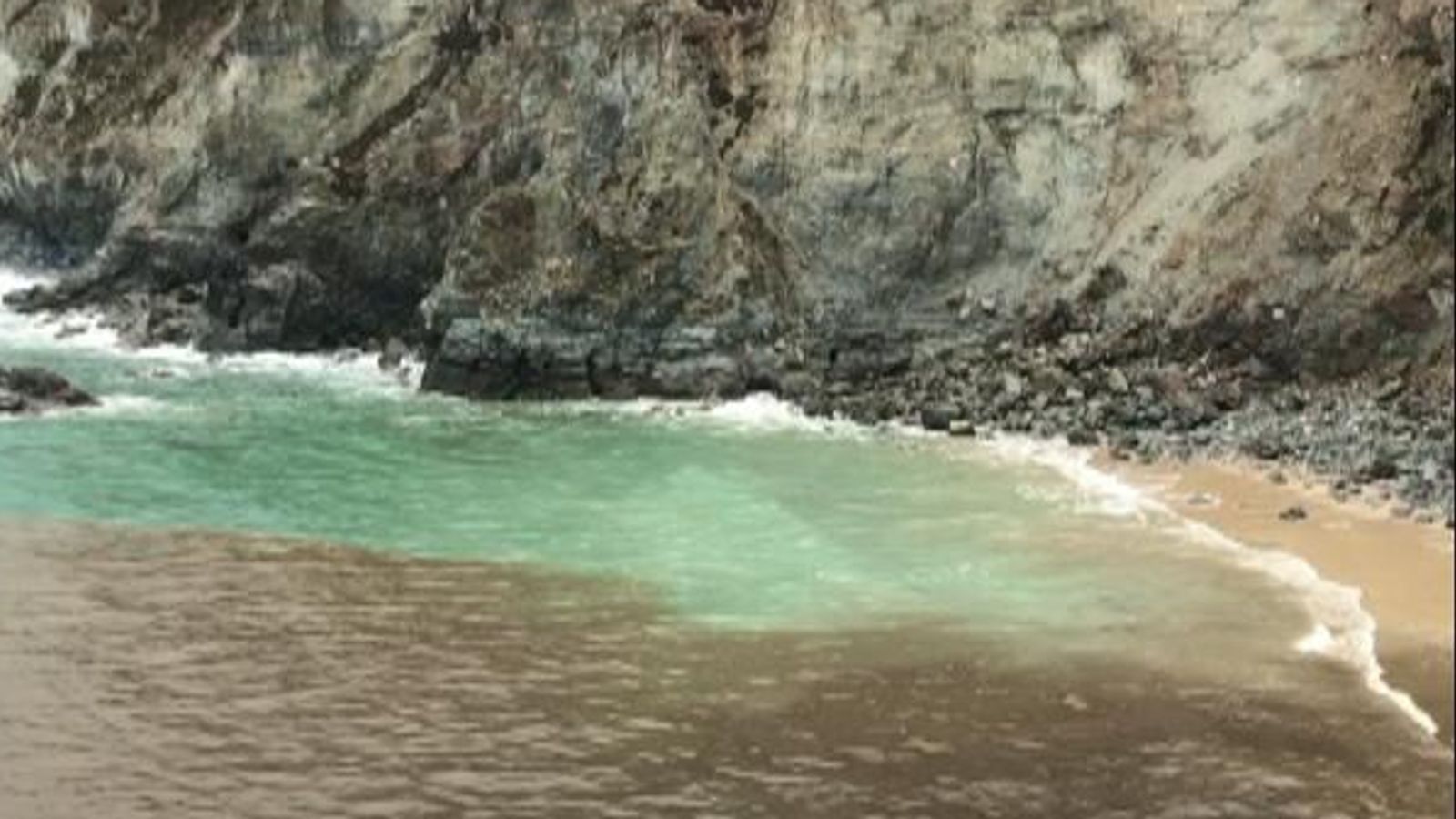Video footage has been captured appearing to show a large amount of raw sewage being pumped into seawater at a picturesque Cornish beach, in the latest incident to impact the UK coastline.
The discharge on Sunday happened at St Agnes beach on the north coast of the county after a storm overflow was triggered.
The dramatic footage – showing water turning from turquoise to brown, which the water company says was partly caused by mud in the water – was filmed by local surfer Nick Jones, who told Sky News he was shocked at what he was seeing.
“I’d just got back from walking the dogs. Sadly, it’s a story that’s happening increasingly frequently. I’m gutted for so many different reasons. The environment, the water users, the sea life. The repercussions are endless.”
A number of new pollution warnings on beaches, mainly in the South West, have been issued by the charity Surfers Against Sewage.
Its head of Campaigns and Policy, Amy Slack, says the damage being caused by water companies is clear.
“It’s plain for us all to see. Sewage pollution being pumped into one of our beautiful beaches in Cornwall. It is shocking when you see these images. We are seeing more and more evidence of this come to light.
Southern Water and Thames Water bosses admit their performance has been ‘unacceptable’ amid anger over sewage spills
Worm’s saliva found to break down plastic in major pollution breakthrough
Liz Truss Environment Agency budget cuts resulted in ‘doubled sewage discharge’, Labour claims
“We saw 370,000 sewage discharges into our rivers and seas in 2021. That’s 2.6 million hours of sewage being discharged into some of our most beautiful, cherished blue spaces,” she added.
Please use Chrome browser for a more accessible video player
Ms Slack said the charity is increasingly seeing people falling ill after swimming in polluted waters.
“People are getting sick,” she added. “Gastroenteritis, stomach upsets, ear, nose and throat infections, eye infections; sometimes people are being hospitalised due to the illnesses they are catching from entering the water. It’s having a huge impact on not just the environment but our human health as well.”
There have been a number of sewage incidents this year, and in August the government announced a crackdown on water companies, including a target to improve all storm overflows discharging into or near designated bathing water by 2035.
Ms Slack said: “We’ve seen decades of under investment in our sewage infrastructure. The water industry is now essentially allowed to self-monitor itself. We’ve seen that issue getting worse and worse. We need to see a decade of real ambition and investment in our sewage infrastructure.”
A spokesperson for South West Water, responsible for operating water services in the region, told Sky News: “While the storm overflow at St Agnes triggered briefly on Sunday (30 October) following heavy rain, this was a short duration spill and is unlikely to have caused the level of discolouration shown in the video.
Read more:
Huge increase in raw sewage released into UK waterways and sea, data reveals
New government plan to crack down on sewage discharge branded ‘cruel joke’
Southern Water and Thames Water bosses admit performance ‘unacceptable’ amid anger sewage spills anger
“On this occasion, we believe there were other factors which contributed to the discolouration, such as mud in the water dislodged by the heavy rain flowing into the area from a nearby stream and runoff from agricultural land.
“We continue to increase investment in the region’s infrastructure as part of our ongoing commitment to protecting and enhancing the natural environment.
“This year the South West has seen the dramatic changes in weather patterns presented by climate change, as demonstrated in August when the region was declared in Drought. Through these changes we are now experiencing more extreme weather patterns than ever before and this year the South West saw one of the driest and hottest years on record.
“As well as prolonged periods of extremely hot weather, we have seen heavy localised rainfall which hasn’t been able to permeate into the dry ground, meaning significant volumes run into our network, which can cause our storm overflows to trigger.”








